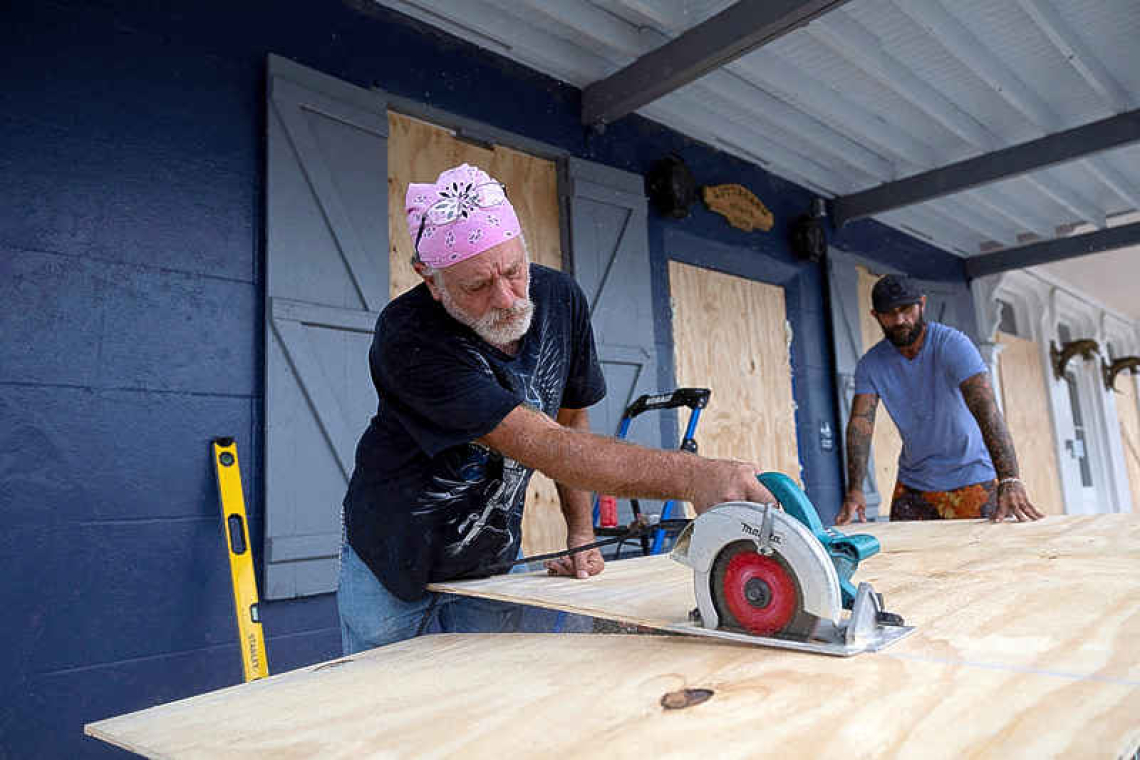TAMPA--Tropical Storm Debby is expected to strengthen rapidly into a hurricane before making landfall in the Big Bend region of Florida's Gulf Coast by midday on Monday, the U.S. National Hurricane Center (NHC) said on Sunday, warning of life-threatening storm surges. By 8 p.m. ET on Sunday, it had sustained winds of 70 mph (112 km/h), just 4 mph shy of being designated a hurricane, and is expected to strengthen into the night. The hurricane center forecast life-threatening conditions, including storm surges up to 10 feet (3 meters) in some areas. As it slowly moves north through the week, the storm may bring "potentially historic rainfall" of between 10 and 20 inches (25 and 50 cm) and catastrophic flooding to Georgia and South Carolina, it said. Local areas could receive 30 inches of rain by Friday morning, the report said. "This is going to be the story of this storm," said Jamie Rhome, the deputy director of the hurricane center. "It's slow motion is going to dump historic amounts of rainfall - potentially over 20 inches. You're talking about catastrophic flooding." The storm could be likened to Hurricane Harvey, which slammed into Corpus Christi, Texas, in August 2017. While downgraded into a tropical storm as it moved inland, it lingered over the state, dumping about 50 inches of rain on Houston. Harvey is rated as one of the wettest storms in U.S. history, causing more than 100 deaths and $125 billion in damage, primarily from flooding in the Houston metropolitan area. Rhome said Debby is fueled by exceptionally warm Gulf waters. Climate scientists believe man-made global warming from burning fossil fuels has raised the temperature of the oceans, making storms bigger and more devastating. Preparing for Debby, Florida Governor Ron DeSantis called up 3,000 National Guard troops and placed most of the state's cities and counties under emergency orders, while mandatory evacuations were ordered in parts of the Gulf Coast counties of Citrus, Dixie, Franklin, Levy and Wakulla. DeSantis said there are more than 17,000 linemen and other electric workers ready to restore power. The governors of Georgia and South Carolina also declared states of emergency ahead of the storm. Debby became a tropical storm late on Saturday. As of 8 p.m. ET, Debby was about 100 miles (160 km) west of Tampa and moving toward the Gulf Coast at 12 mph (19km/h), with maximum sustained winds of 70 mph (110 km/h), the NHC said. To become a hurricane, sustained winds must reach 74 mph. The center of Debby will move across the eastern Gulf of Mexico through Sunday and reach the Florida Big Bend coast by midday on Monday, the hurricane center added. Debby is then expected to move slowly across northern Florida and southern Georgia on Monday and Tuesday, it said. The storm is expected to lose some strength after landfall but bring heavy rain as it crosses central Florida out to the Atlantic coast, before crawling up to Savannah, Georgia, and then onward to Charleston, South Carolina, early in the week. Storm surges forecast for Bonita Beach northward to Tampa Bay could send sea waves further inland than normal, damaging structures and endangering anyone in their path. A hurricane warning is in effect on the Florida coast from Bonita Beach northward to Longboat Key including Charlotte Harbor, and a warning is in effect on the Florida coast from the Suwannee River to Yankeetown.







